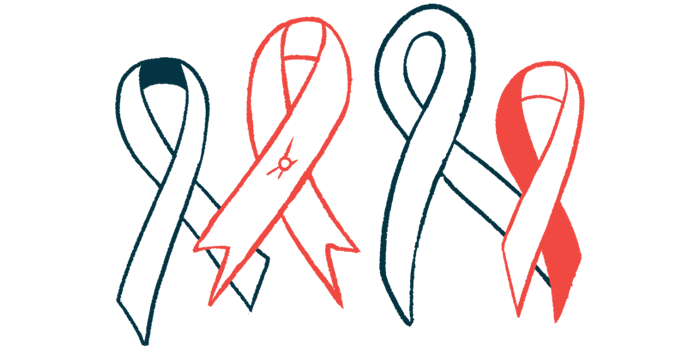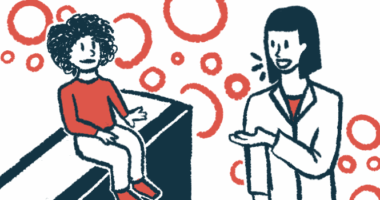Score of MDA-led Activities Mark September, MD Awareness Month

A myriad of activities are afoot to mark National Muscular Dystrophy Awareness Month, observed each September. The events aim to raise funds for, and heighten awareness of, muscular dystrophy (MD) and related neuromuscular disorders thought to affect more than 300,000 families across the U.S.
Awareness days are set for two kinds of MD: Duchenne and limb-girdle. Sept. 7 is World Duchenne Awareness Day, and Sept. 30 is Limb-Girdle Muscular Dystrophy Awareness Day.
Supporters have access to downloadable materials — available in multiple languages— that include a logo, social media banners, and the Duchenne Manifesto to mark Sept. 7. All are asked to share this information online using the hashtag, #WDAD2021. Downloads are also available for LGMD Awareness Day.
The annual observance is led by the Muscular Dystrophy Association (MDA), which is offering a host of educational, advocacy, story sharing, and fundraising activities and events.
The nonprofit is also presenting key findings from a survey about everyday life with muscular dystrophy.
“We’re proud of the extensive campaign we are launching in September to elevate awareness of people living with neuromuscular diseases,” Donald S. Wood, PhD, MDA’s president and CEO, said in a press release. “The stories we will share throughout the month will elevate the powerful narrative of our families, and the survey data helps us evolve as an organization to serve our community, to advocate, educate, and continue to raise awareness and funds for breakthrough research and care.
“We are here to empower our families to live fulfilling lives without barriers.”
This year’s MDA Access Survey was developed to better understand some of the common barriers facing the community, such as access to equipment, treatments, education, employment, and financial independence.
The U.S. survey garnered 2,837 responses: 2,211 patients and 626 caregivers. Ten percent of participants were under age 18.
Some 59% of respondents who had been denied equipment insurance coverage reported that the denial was due to equipment being deemed “not medically necessary.” Also, 16% said they receive federal disability benefits that limit them to a part-time or low-paying job; 5% choose not to work to keep their medical benefits.
In terms of employment, 66% of those surveyed believe that, to support diversity and the inclusion of people with disabilities, workplaces need more resources, and 27% reported facing barriers in the workplace, ranging from becoming unemployed or unable to find work due to their disease (9%) to not receiving requested accommodations (4%).
In addition, 19% of caregivers of school-age patients said children’s needs are not sufficiently supported by individualized education plans, what are called 504 plans. The plans are intended to ensure that disabled children in elementary or secondary school have the instruction, services, accommodations, and access necessary for academic success.
Among other findings, 72% of respondents identifying as recent students believe that more resources are needed to support diversity and inclusion within their school’s student body.
Limitations to access for public or private businesses, or to public transport or local sidewalks, was also noted by 27% of respondents.
So that more people can understand the everyday lives of those with a neuromuscular disease, the MDA is presenting “My Powerful Story,” featuring the stories, each including artwork and a video, of four people with MD: Tana Zwart, Jonathan Lengel, Brittany Sharp, and Suzanne Rood.
Zwart’s story, for example, notes she was active child until diagnosed at a young age with facioscapulohumeral muscular dystrophy (FSHD). But her parents always encouraged her and “gave her space to adapt to the challenges she faced. Her story shows her changing perspective from seeing her wheelchair as a symbol of losing her fight against FSHD to seeing her wheelchair, and her FSHD, as something special and empowering.” She is a former MDA national ambassador.
On Sept. 4, the organization will build on its “telethon” fundraising legacy to present its inaugural MDA Takes Vegas, an eight-hour Labor Day weekend “stream-a-thon” being streamed live from the Luxor Hotel and Casino in Las Vegas. The event includes the gamers Alpharad and Terroriser, giveaways, a special Vegas production, and appearances by former and current professional athletes, including Nyheim Hines, an Indianapolis Colts running back and the MDA’s national spokesperson. Supporters are invited to view the live gameplay and to make donations.
“We’re excited to tap into the philanthropic spirit of the gaming community and amplify our message of supporting people living with muscular dystrophy, ALS [amyotrophic lateral sclerosis] and related neuromuscular diseases,” said Kristine Welker, chief of staff at the MDA. “From stage to stream, we are innovating to further our mission.”
Also on Labor Day weekend, the MDA’s long-standing partnership with the International Association of Fire Fighters continues with the group’s “Fill the Boot” fundraising effort.
Throughout September, the MDA is also focusing on advocacy initiatives ranging from newborn screening and education to accessible air travel and employment. For example, the MDA Advocacy Institute will present its legislative agenda in a Sept. 30 webinar. Use this link to register.
And on Sept. 24, Mindy Henderson, host of the MDA Quest podcast, will join a webinar panel during the inaugural Telehealth Awareness Week to discuss the impact of telehealth on the neuromuscular disease community. Telehealth is the use of telecommunication technologies for health-related services and information.
“It is so meaningful for me to host the Quest podcast and create a space for people within the neuromuscular disease community to discuss the issues that impact us, such as travel, dating, and accessibility,” Henderson, who has spinal muscular atrophy, told Muscular Dystrophy News in an e-mailed statement about the podcast, whose discussions cover issues and barriers facing patients and their families.
“Serving as part of MDA’s ‘Disability as Diversity’ movement, this podcast is particularly important in September’s Muscular Dystrophy Awareness Month because it not only amplifies our community’s voice, but also educates a wider audience to create more inclusivity and change,” Henderson said.
Also under the community education banner, MDA Engage community education programming will feature on-demand and live events, including the Sept. 14 webinar, “Your Future, Your Family and Neuromuscular Disease.” There will be a myasthenia gravis symposium on Sept. 18, and a caregivers seminar on Sept. 25.
In addition to the general public, National Muscular Dystrophy Awareness Month seeks to raise awareness among lawmakers, industry representatives, public authorities, researchers, and health professionals.
On World Duchenne Awareness Day, which heightens awareness of Duchenne — the most common form of MD — and Becker muscular dystrophy, the World Duchenne Organization will present a two-hour webinar (Spanish interpretation available) on the observance’s theme: Adult Life and Duchenne. Life expectancy of Duchenne patients has increased markedly over the past decade.
For Limb-Girdle Muscular Awareness Day, participants are invited to become ambassadors: promoting local awareness, reading about volunteer efforts, utilizing a variety of downloadable materials, and wear lime green, the official color representing limb-girdle.
All are invited to follow the campaign on Facebook for awareness day activity updates.







